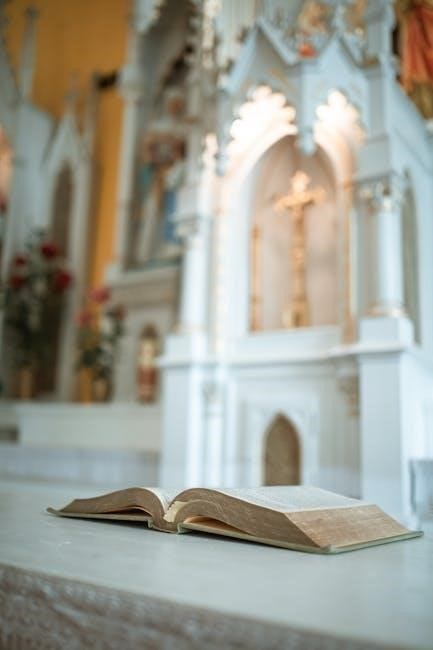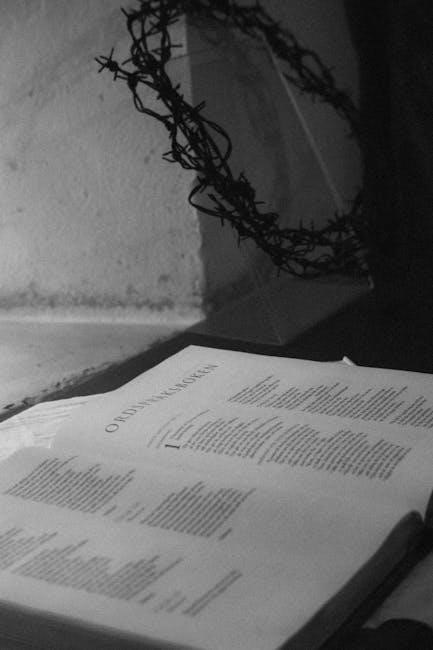Octavia Butler’s Parable of the Sower, published in 1993, is a haunting dystopian novel set in 2024. It follows Lauren Olamina, a young woman navigating a collapsing society amidst climate chaos, inequality, and political upheaval, offering a stark warning and a vision of resilience.

Themes in Parable of the Sower
The novel explores themes of societal collapse, environmental degradation, and systemic inequality, while emphasizing resilience and hope. It challenges readers to reflect on humanity’s relationship with power and survival.
2.1 Climate Change and Social Inequality
Parable of the Sower vividly portrays a dystopian America in 2024, where climate change has ravaged the planet, leading to societal collapse. Rising temperatures, droughts, and extreme weather events have become the norm, exacerbating poverty and social inequality. The novel highlights how environmental degradation disproportionately affects marginalized communities, pushing them further into destitution. Corporations and the wealthy wield immense power, while the poor struggle to survive in a world where basic necessities like water and food are scarce. Lauren Olamina’s journey reflects the intersections of race, class, and gender in a crumbling society. Butler critiques systemic inequities, showing how climate change accelerates existing disparities, creating a world where the gap between the haves and have-nots grows ever wider. Through this lens, the novel serves as a stark warning about the consequences of neglecting environmental and social justice.

2.2 Political Upheaval and Dystopia
Parable of the Sower depicts a United States in 2024 grappling with political upheaval and a descent into dystopia. The government’s collapse has led to widespread anarchy, with cities becoming battlegrounds and communities forced to fend for themselves. Corporations wield immense power, replacing failing state institutions and exploiting vulnerable populations. The rise of authoritarian figures and the erosion of civil rights further destabilize the nation. Lauren Olamina’s experiences illustrate the dangers of political fragmentation and the exploitation of power vacuums. Butler’s vision of a fractured America serves as a cautionary tale about the consequences of systemic failure and the rise of fascism. The novel underscores the fragility of democracy and the ease with which societal structures can collapse, leaving individuals to navigate a treacherous world devoid of hope and security.

Protagonist: Lauren Olamina

Lauren Olamina, the protagonist of Parable of the Sower, is a young, visionary narrator whose journey through a collapsing society shapes her into a resilient leader. Her unique perspective and strength drive the story.
3.1 Lauren Olamina’s Background
Lauren Olamina, born in 2009, begins her journey as a 15-year-old in 2024 in a dystopian Orange County. Her father, a preacher and professor, instills in her a sense of community and moral values, while her stepmother manages the household and raises her younger brothers. Growing up in a gated community, Lauren witnesses the gradual disintegration of society due to climate change, economic collapse, and rising inequality. Her unique condition, hyperempathy, allows her to physically feel the pain of others, shaping her worldview and driving her to seek solutions for a desperate future. Lauren’s background is marked by both the privileges of her upbringing and the harsh realities of her environment, which prepare her for the challenges she will face.
3.2 Her Role and Growth
Lauren Olamina evolves from a vulnerable teenager to a resilient leader, navigating a disintegrating world. Her hyperempathy, a condition that forces her to feel others’ pain, initially isolates her but later becomes a source of strength. As societal structures crumble, Lauren takes on the role of a visionary, developing the philosophy of Earthseed, which emphasizes adaptability and collective responsibility. Her journey from a gated community to the unknown fosters growth, as she learns to lead, protect, and inspire others. Lauren’s ability to adapt and her refusal to surrender define her transformation, turning her into a symbol of hope in a fractured world. Her growth is marked by self-discovery, resilience, and the determination to create a better future, making her a compelling and inspiring protagonist.

Setting: The Dystopian United States
Octavia Butler’s Parable of the Sower is set in a dystopian 2024 United States, where climate change and social inequality have led to widespread poverty and anarchy. The story unfolds in a fractured Orange County, reflecting a nation in environmental and societal collapse.
4.1 The US in 2024
In Parable of the Sower, the United States in 2024 is a nation in ruins. Climate change has ravaged the environment, leading to extreme weather events and resource scarcity. Societal structures have collapsed, with widespread poverty, violence, and inequality dominating the landscape. The government is ineffective, and corporate interests wield immense power, further exacerbating the suffering of the marginalized. Lauren Olamina, the protagonist, experiences this dystopia firsthand in her community in Orange County, where walls and gates are the only protections against the chaos outside. The once-stable neighborhoods are now breeding grounds for desperation and fear. Butler vividly portrays a society teetering on the brink of total collapse, where the divide between the haves and have-nots has grown insurmountable. This bleak setting serves as a chilling backdrop for Lauren’s journey and a stark warning about the consequences of ignoring environmental and social crises.
4.2 Causes of Societal Collapse
The societal collapse in Parable of the Sower stems from a combination of environmental, economic, and political factors. Climate change is a central driver, causing devastating natural disasters, water shortages, and agricultural failures. This leads to widespread poverty and resource scarcity, which exacerbates social inequality. The wealthy live in gated communities, while the poor are left vulnerable to violence and exploitation. Corporate greed and political corruption further destabilize the system, as powerful entities exploit resources and labor, deepening the divide between the rich and the poor. The government’s inability to address these issues results in a loss of trust and authority, leaving society fragmented and chaotic. Environmental degradation and systemic failures create a perfect storm that dismantles the foundations of civilization, plunging the world into anarchy and despair. Butler’s depiction of these interconnected crises serves as a stark warning about the consequences of neglecting critical global challenges.

Relevance in the Modern Era

Octavia Butler’s Parable of the Sower resonates deeply in the modern era, addressing climate change, inequality, and political instability. Its themes of resilience and adaptability offer both warning and inspiration today.
5.1 Modern Relevance
Octavia Butler’s Parable of the Sower holds profound relevance in the modern era, as its themes of climate change, inequality, and political instability mirror contemporary challenges. The novel, written in 1993, depicts a dystopian future that eeriely aligns with today’s realities, such as rising temperatures, social unrest, and economic disparity. Butler’s vision of a society unraveling due to environmental degradation and corporate greed resonates sharply with current concerns about sustainability and justice. The book’s exploration of grassroots resistance and communal resilience also speaks to modern activism, offering a blueprint for navigating crises. Its central philosophy, Earthseed, emphasizes adaptability and the idea that “God is change,” inspiring readers to confront uncertainty with courage. As a result, Parable of the Sower has become a vital text for understanding and addressing the complexities of our time, proving Butler’s prophetic vision and timeless relevance.
5.2 Revolutionary Themes
Octavia Butler’s Parable of the Sower explores revolutionary themes that challenge societal structures and inspire transformative change. The novel introduces Lauren Olamina’s philosophy of Earthseed, which posits that “God is change” and encourages individuals to embrace adaptability and agency. This ideology serves as a call to action, urging readers to confront systemic oppression and environmental collapse. The text critiques capitalism, racism, and political corruption, envisioning a future where collective action and community-driven solutions can dismantle oppressive systems. Butler’s portrayal of grassroots resistance and the power of shared vision resonates with modern social movements, emphasizing the importance of unity and resilience in the face of adversity. By centering marginalized voices and advocating for radical change, Parable of the Sower becomes a powerful manifesto for revolution, inspiring readers to reimagine a just and sustainable future.